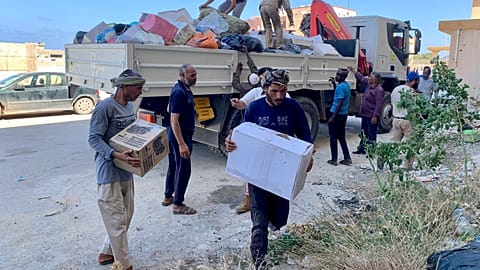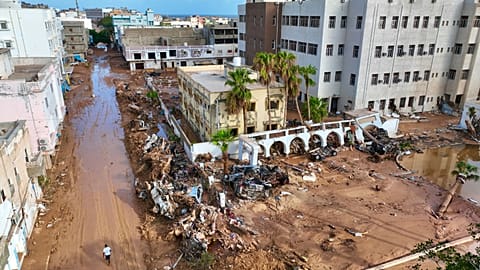The Netherlands is one of Europe's most innovative countries on tackling rising waters.
The Dutch are no strangers to weathering the tides. For years, the waterlogged country has tackled the threat of rising sea levels with ambitious infrastructure designed to keep the waters at bay.
The Maeslant storm surge barrier on the Nieuwe Waterweg in South Holland is one big success.
Built between 1991 and 1997, it is part of the Delta Works, designed to respond to water level predictions calculated by a centralised computer system.
The barrier closes automatically when Rotterdam is threatened by floods, protecting one and a half million people. The gates shut if the water is expected to rise three metres or more.
According to Marc Walraven, Senior Stormsurge Barrier Advisor, the barrier was designed with rising sea levels in mind - built to have a lifespan of around 100 years. It is able to withstand an increase of five metres before significant changes are needed.
"In reality, we have closed twice in 25 years. We expect to be closing more often in the future of course... We accounted for around 50 cm of sea level rise. But of course, we can't predict the future exactly, so we expect we will need to make possible alterations sometime between 2060 and 2090," he says.
The barrier is tested once a year, drawing a crowd of hundreds.
Are sea levels rising?
According to the United Nations, sea levels are currently rising more than twice as fast as in the 20th century.
In October 2021, the Royal Netherlands Meteorological Institute (KNMI) released a report showing that initial water rising calculation rates were underestimated.
"If we do not reduce greenhouse gas emissions, the sea level off the Dutch coast could rise by 1.2 metres around 2100 compared to the beginning of this century.
If the melting of the Antarctic Ice Sheet at the South Pole accelerates, even the 2-metre sea level rise in 2100 is in sight.
In 2014, KNMI calculated that the limit would be one metre in 2100. So the calculated sea level rise has now been revised upwards."
The Netherlands is inspiring other countries with their floating farms
However, the centuries-old strategy of dams, dikes and storm surges may not be the only solution to protecting the future of the Netherlands.
Innovation is also seen as the answer by a local entrepreneur.
Located in the Merwehave, Rotterdam's Floating Farm is the world's first floating farm. It is home to 40 cows, whose milk is processed below deck. The idea was born after Hurricane Sandy hit New York in 2012 - when food ran out fast.
"The provision of food in a city relies heavily on logistics. And if something floods, there are no more logistics," explaind Minke van Wingerden, the co-founder of the Floating Farm.
"Then we had the idea that if you build in a climate-adaptive way, meaning you move up and down with the tide, on the water, you are less reliant on logistics."
That idea is spreading - Singapore and Dubai have expressed interest in opening floating farms of their own.
In the meantime, as the Netherlands continues to adapt to the climate crisis, barriers like the Maeslantkering give people confidence that they can face an ever-uncertain future.
Watch the video above to see the floating farm and giant flood barrier.


















